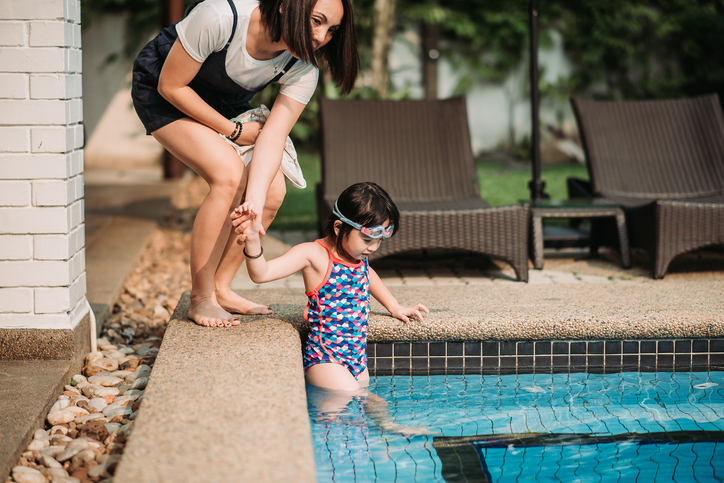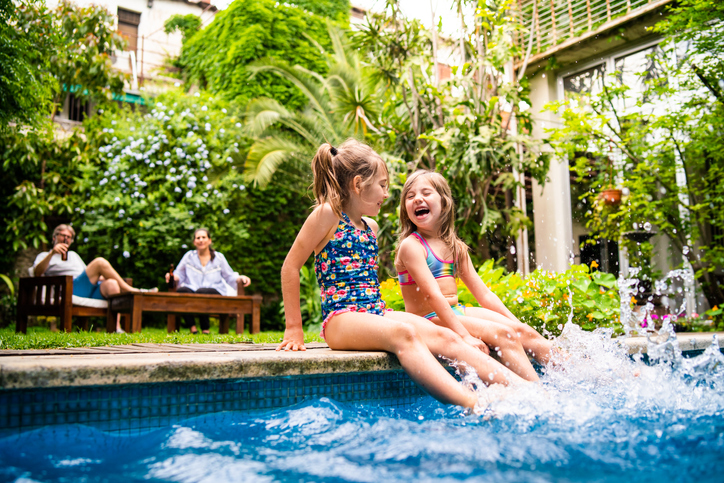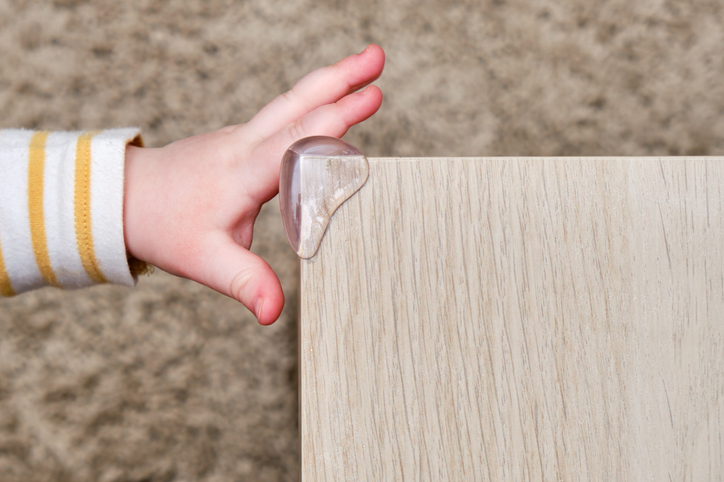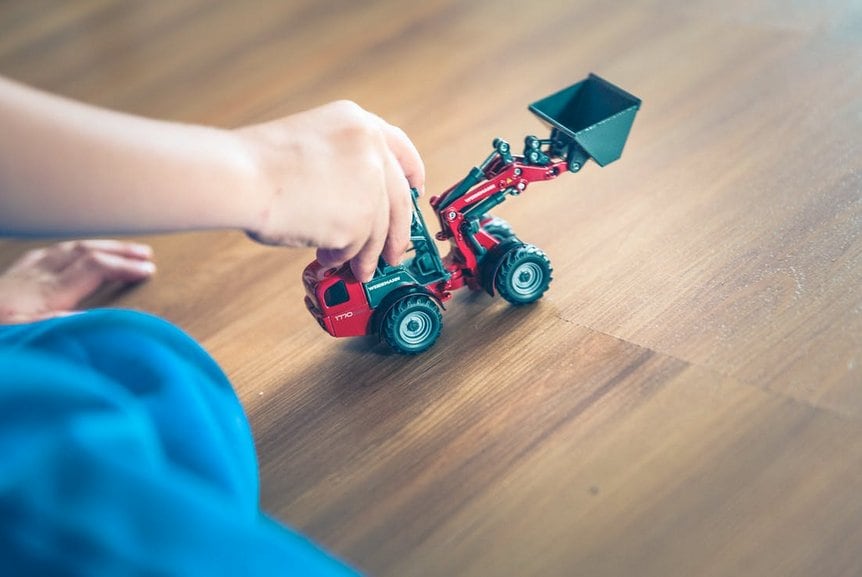Home water safety should be evaluated when assessing one’s overall home safety. Every year, tragic drowning accidents claim numerous lives with nearly 90 children drowning inside the home per year and almost 400 children drowning in pool-related situations. Many of these could have been prevented with the right knowledge and precautions. From swimming pools to bathtubs, ornamental ponds to hot tubs, even seemingly harmless water sources can pose significant risks, particularly to children, the elderly, and non-swimmers.

By understanding and implementing effective water safety measures at home, these risks can be greatly reduced, providing a safer environment for everyone. It’s about understanding the potential dangers, being aware of our surroundings, and taking sensible precautions. So, whether you’re a homeowner, a parent, or a caregiver, having knowledge about preventing drowning accidents at home isn’t just important—it can be a lifesaver.
Common Places of Danger and Basic Safety Measures
There are several common sources of water in every home where drowning accidents can occur including swimming pools, bathtubs, sinks, and even buckets filled with water. Outdoors, garden ponds, inflatable paddling pools, and hot tubs also present significant hazards. For very young children, any body of water deeper than two inches poses a risk.
When it comes to toddlers and young children, experts recommend a maximum water depth of 12 inches for supervised play. This guideline applies to both indoor and outdoor settings, including kiddie pools, bathtubs, and other shallow water play areas. Notably, even in such shallow depths, adult supervision is critical. Devices such as the ‘Safety Turtle 2.0’ Child Immersion Pool/Water Alarm Kit, priced around $150, can serve as an additional safety layer, sounding an alarm if a child falls into the water.
Certain times of the year or particular situations can pose a higher risk of drowning at home. For instance, during summer months when pools are in use or during large gatherings when supervision might be more lax. Holidays and family gatherings, while enjoyable, can become dangerous periods if children aren’t adequately supervised near water.
Emphasizing the importance of adult supervision cannot be overstated. Products like the ‘Poolguard PGRM-2 In-Ground Pool Alarm’, retailing for around $275, can aid in alerting adults of unsupervised access to the pool, but these devices are not substitutes for attentive supervision. The presence of a responsible adult, focused on the child and free from distractions such as smartphones, is arguably the most important factor in preventing child drownings at home.
Swimming Pools: An In-Depth Look
Preventing drowning accidents in swimming pools can be achieved by implementing safety measures such as swimming lessons, which can significantly reduce the risk of drowning, equipping both children and adults with crucial life-saving skills. If you don’t have the opportunity to learn to swim, safety protocols must always be in place.
One of the most effective drowning prevention methods is the installation of pool fences and pool alarms. Companies such as “Life Saver Pool Fence” offer removable mesh pool fences that obstruct access to the pool without adult supervision. Prices for these fences can range from $1,500 to $2,500, depending on the size and shape of your pool. Additionally, pool alarms, such as the “Poolguard PGRM-2 In-Ground Pool Alarm,” which costs around $275, serve as an extra layer of protection by sounding an alert when someone enters the water unexpectedly.
Certain design features such as having a clear line of sight from the house or seating area to the pool, non-slip surfaces around the pool, and adequate lighting for evening swimming, can all significantly reduce the risk of drowning in pools. Including shallow areas or ledges within the pool can provide rest spots for swimmers, while pool covers, like those from “Coverstar Automatic Pool Covers,” can completely block access to the water when the pool is not in use, with costs starting around $6,000.
As for guests who can’t swim, it’s important to communicate your pool’s safety rules and to provide flotation devices. Be especially watchful in situations where alcohol is being consumed. Alcohol impairs balance, coordination, and judgment, and its effects are magnified by sun and heat, increasing the risk of drowning accidents. Remember, the key is prevention, and it starts with acknowledging the potential risks and taking necessary steps to ensure everyone’s safety.
Bathrooms, Hot Tubs, and Spas
Safe bath time for babies involves a combination of attentiveness and the use of appropriate bathing equipment. Never leave a child unattended in a bathtub, not even for a moment. Consider using a baby bathtub, like the “Skip Hop Moby Baby Bathtub,” which retails for about $35 and includes a sling to cradle infants safely. As children grow, introducing non-slip mats or stickers in the bathtub can prevent slips and falls.
For hot tubs and spas, it’s critical to keep the cover secured when not in use to prevent children from falling in. “Cover Valet NP509 Spa Cover Lift and Caddy,” priced around $200, can help manage heavier spa covers. Also, consider installing a safety rail, like the “Leisure Concepts SmartRail Spa Safety Rail,” priced at approximately $130, to provide support when entering and exiting the spa. Monitoring the temperature and limiting soak time can also prevent overheating, which can lead to drowsiness and the risk of drowning.
Elderly family members are typically more prone to slips and falls due to mobility issues and require additional precautions. Installing grab bars in bathrooms and around hot tubs can provide necessary support. Brands like Moen offer a variety of options, such as the “Moen Home Care 18-inch Grab Bar,” which costs around $30. A bath seat, like the “Drive Medical Premium Series Shower Chair,” priced at about $40, can provide additional stability during bathing. Regularly check the condition of these aids and ensure they are secure, as loose or worn-out equipment can pose additional risks. Understanding the unique needs of each age group and creating a safe water environment accordingly is crucial in preventing drownings at home.
Garden Safety: Ornamental Ponds and Water Features
Maintaining safety around ornamental ponds or water features in the garden involves using some of the same safety measures used for swimming pools such as fencing which is one of the most effective ways to prevent unintentional access to water features. Brands like “Garden Craft,” for instance, offer attractive yet sturdy garden fences that can blend in well with your outdoor aesthetics. The cost for these fences varies based on the size and material, but expect to pay from $50 to over $200 per panel.
Using a sturdy pond cover, like those available from “Green Vista Water Gardens,” which retails from $60 to over $200 depending on the size, can prevent accidental falls into the water and are also appealing to many for how they look. For larger water features, you might consider a professional-grade pond netting system, like the “Atlantic Pond & Garden Protector,” which can cost between $125 to $175. It’s also worth noting that the depth and complexity of a water feature should correlate with the age and swimming abilities of those who frequent the garden.
Pets can also be curious and are as at risk as children. Dogs, in particular, may be attracted to garden ponds and other water features and a fence or a sturdy cover can keep them safe, as can training them to stay away from the water. For pets that spend a lot of time outside, pet life jackets, like the “Outward Hound Granby Splash Dog Life Jacket,” which costs around $25, could provide an extra level of safety. Just like human family members, our furry friends need their safety considered when around any body of water.
The Role of Education and Skills
Learning to swim is often the first line of defense in preventing home drowning accidents. Various organizations, like the American Red Cross and the YMCA, offer swimming lessons for all ages. Costs can range from $50 to $100 per lesson, but the investment can be priceless when it comes to safety. It’s not just about learning to swim, though. Water safety and survival skills, such as floating, treading water, and staying calm when in water, are equally important.
Educating children about the dangers of water can be difficult sometimes as we want them to respect water bodies and understand the potential risks without instilling fear. Children’s books like “Stewie the Duck Learns to Swim” by Kim Leonard and Stew Leonard III, priced around $10, do a great job of imparting water safety lessons in an engaging and age-appropriate manner.
Consider using flotation devices to provide an added safety net when your children are playing near water at home. Brands like Stearns offer a range of life jackets, such as the “Stearns Child Classic Series Life Vest,” which costs around $30. It’s crucial to ensure that any flotation device you purchase is U.S. Coast Guard-approved for its intended use.
Lastly, the importance of CPR training is highly important as time is of the essence if a drowning emergency occurs at home. The American Red Cross and the American Heart Association offer CPR certification courses often for less than $100. Being equipped with this potentially life-saving skill can make a crucial difference in a water emergency until professional medical help arrives. As the saying goes, “Knowledge is power,” and when it comes to water safety at home, this rings especially true.
Legal Responsibilities of Homeowners
As homeowners, individuals have a legal duty of care towards anyone who enters their property, including ensuring the safety around water bodies. This responsibility, often referred to as premises liability, means homeowners could face legal consequences if someone gets injured or drowns in a pool or any other water feature on their property due to negligence.
One aspect of this responsibility is ensuring all safety measures are in place and well-maintained including proper fencing around pools, secure covers on spas and hot tubs, and functioning pool alarms, like the “Poolguard PGRM-2 In-Ground Pool Alarm,” which retails for around $279.
Homeowners are also expected to provide safety equipment such as life rings or reaching poles near the pool area. A cost-effective option could be the “Poolmaster 55552 Durable Swimming Pool Safety Ring,” available for approximately $50, and the “U.S. Pool Supply Professional 16 Foot Blue Anodized Aluminum Telescopic Pool Pole,” which costs around $60.
Moreover, in rarer cases where a homeowner has a party or gathering where the pool is in use, they may be obligated to hire a professional lifeguard for the event to ensure the safety of their guests. Companies like “Golden State Lifeguards” offer event lifeguard services, with prices varying based on the event’s size and duration.
Finally, homeowners should check their home insurance policy to ensure it covers pool-related accidents. If not, they may need to consider purchasing additional liability coverage. Legal responsibilities can vary by location, so it’s wise to consult with a local attorney or insurance agent to fully understand these obligations.
Remember, the ultimate goal is not to avoid liability, but to prevent accidents from happening in the first place. When it comes to water safety, diligence and precautionary measures are the most important.
Take Away
Water safety at home hinges on comprehensive prevention strategies – from setting up physical barriers like pool fences and alarms, to educating household members about the potential dangers of water bodies. Incorporating safety measures across various home environments, such as swimming pools, bathrooms, and gardens, is crucial. Moreover, skills like swimming and CPR could prove lifesaving in emergencies. Homeowners have a legal duty to ensure their properties are safe for visitors, emphasizing the shared responsibility we all bear in preventing home drowning incidents. The bottom line is that constant vigilance, preventive measures, and education are keys to making our homes safer.




